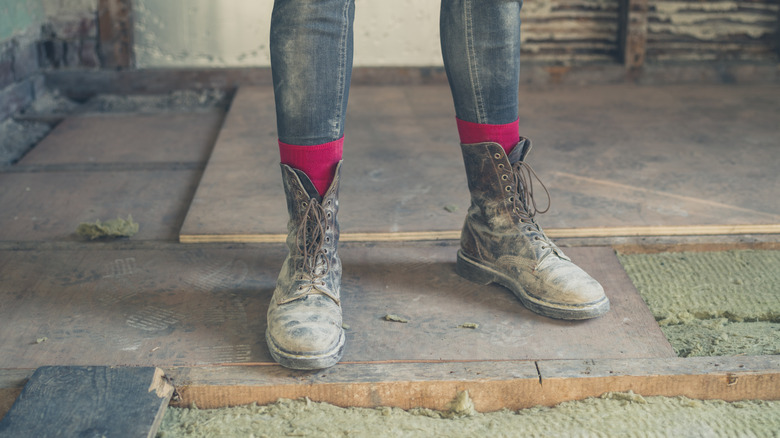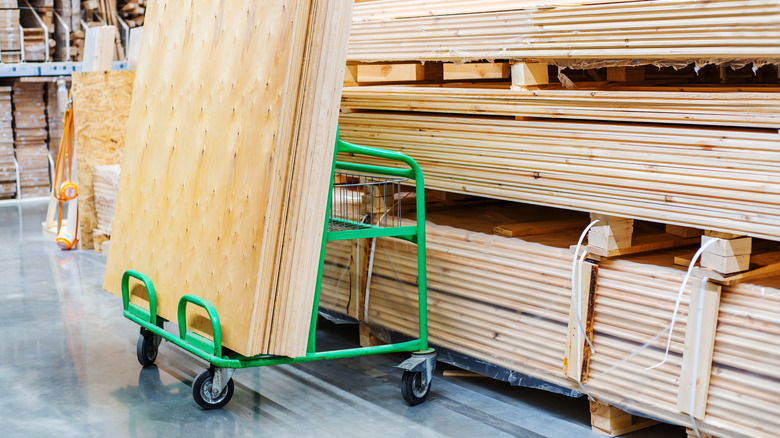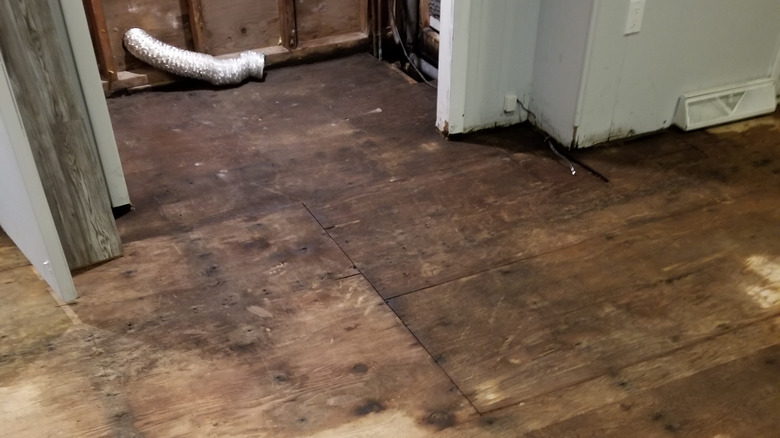What Is A Subfloor In Home Renovation?
There's more to flooring than meets the eye. On the surface, our feet are greeted with aesthetically pleasing, comfortable, and highly functional materials and designs. But underneath, there are many layers hard at work to provide constant, reliable support. A subfloor is a crucial part of the foundation that resides under finished flooring materials such as tile, hardwood, linoleum, or carpet. It is usually constructed from concrete or timber (hardwoods, typical in older homes, plywood, and sometimes oriented strand board called OSB,) according to FlooringStores.com.
Another component of flooring is the joists, which serve as the supporting structure of the floor (similar to studs in a wall) and hold everything in place. In newer homes, the joists are often concealed but in older homes, they can be seen crossing the ceiling of the basement. Underlayment (which is often confused for subflooring but is not a supporting material,) can be made from a variety of materials and is placed between the subfloor and the actual flooring material.
Common subfloor materials
Plywood is a type of manufactured wood made by gluing layers of veneer together with the grain running perpendicular to each other. A tongue-and-groove variety is available and is perfect for subfloor construction. Deck Bros describes plywood as strong with characteristics that lend to less squeaky floors and more energy efficiency. However, humidity can cause the layers to separate over time, and it tends to be a more pricey option.
OSB is another popular subfloor material and is often mistaken for plywood. APA explains that in order to manufacture OSB, cross-oriented layers of rectangular wood strands are glued together with waterproof, heat-curing adhesives. The result is a lightweight panel that is strong and resistant to warping. Homeowners and builders are attracted to this material because it's both durable and cost-effective.
Concrete is often used as subflooring in basements and sometimes on the first levels of homes. It provides a smooth, hard surface that is ideal for use under tile and stone flooring. But, according to The Balance Small Business, because of its tendency to transfer cold and be susceptible to moisture, a vapor barrier is necessary before installing wood or carpet floors.
When should subflooring be replaced?
Subflooring is meant to last a considerable amount of time, but moisture and water damage are the most common reasons for replacement. This type of damage can cause mold to grow and impairment to the structural integrity of the floor. The first sign of rot might be a phantom musty smell and a decaying subfloor will often feel soggy or weak underfoot. Commercial Construction and Renovation says to watch for sagging spots or sunken floorboards as key indicators of trouble. Other things to watch for are cracked floor tiles in a bathroom or kitchen.
If you experience excessive squeakiness when you walk, this can be a sign that you should have your subfloor inspected for possible replacement. Replacing or installing a subfloor can be a challenging DIY project. There are many factors to consider, from where the subfloor is located to the climate where you live. Orlandi explains that hiring a professional to do the job can definitely be worthwhile and will help your flooring last even longer.


